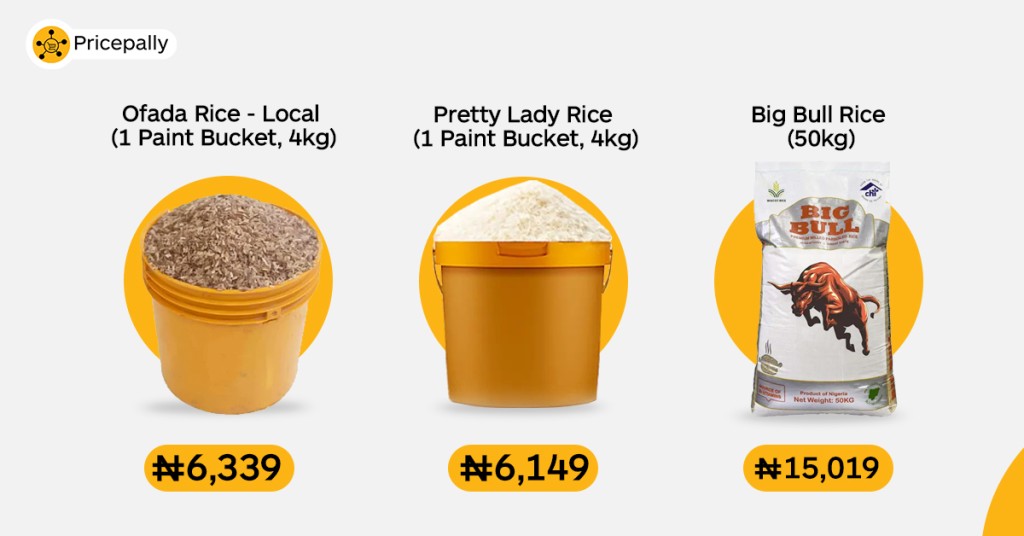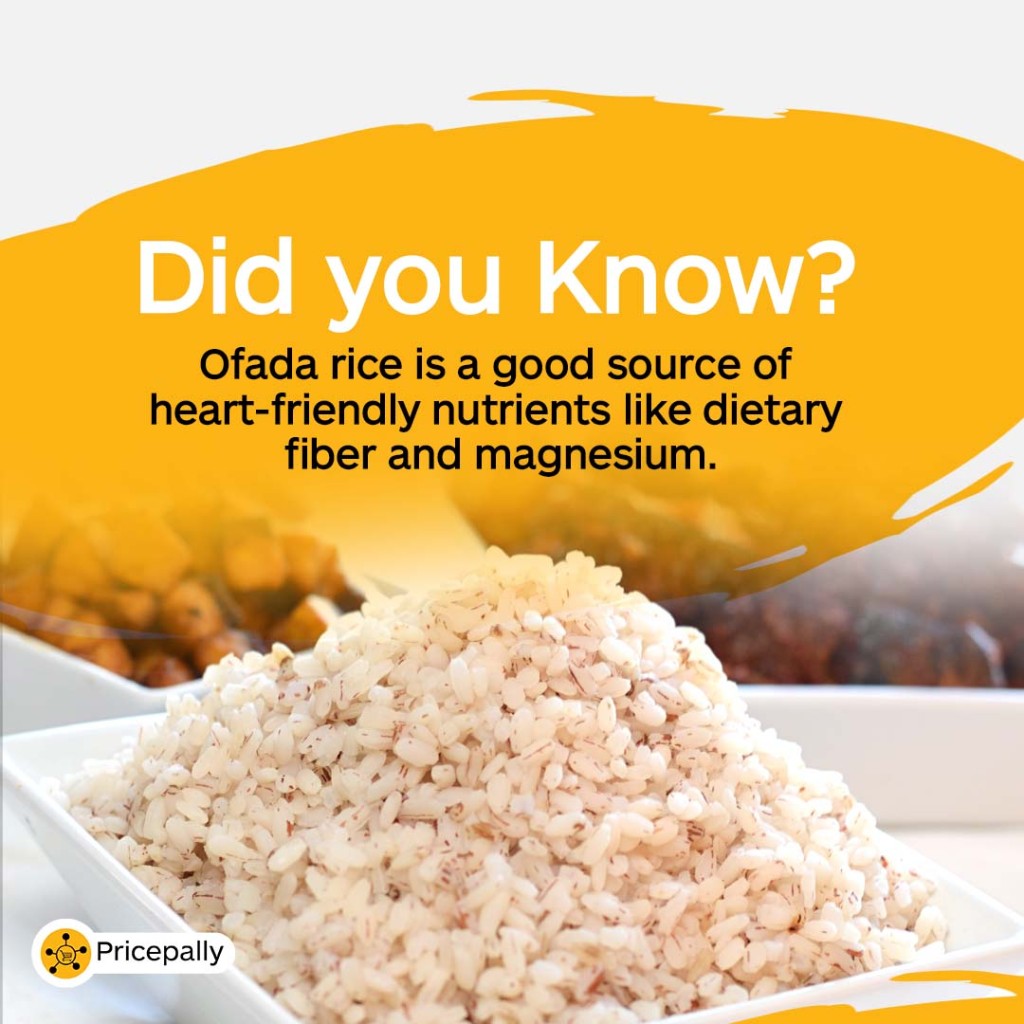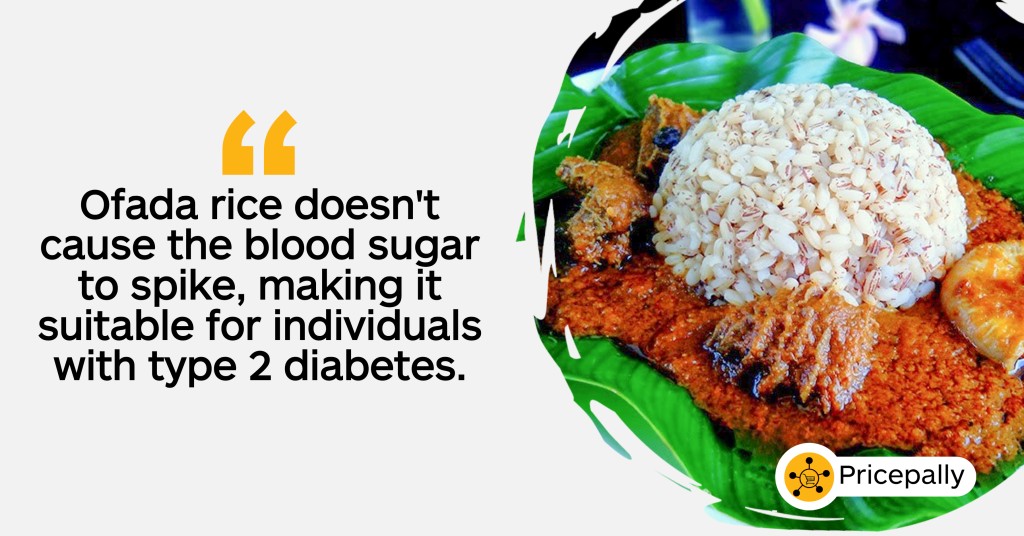If I got a dollar every time I read rice should be removed from my diet, I’d be competing with Elon Musk as one of the richest people on earth. I see the recommendation as part of the hasty demonization of carbs and simultaneous exhortation of other food classes, which I partly understand but don’t completely agree with unless there’s a specific context like managing weight loss, diabetes, or polycystic ovarian syndrome (PCOS) in women. Health context matters a lot in dietary conversations, and the consumption (or not) of rice, including Ofada rice, is no different.
The drama about white rice makes Ofada—the locally grown rice in Nigeria—go under the radar unless you come from its origin, the Yoruba land. Ofada is unpolished medium-to-long rice with an earthy, nutty, unique flavor that announces its presence.
The flavor is so good it has a special soup (ayamase, the stew filled with pepper and locust beans) and a separate dishing material, the moi moi leaves. Like every rice, it contains carbohydrates, but it’s so much more than that, and that may go unnoticed because it’s a “rice.”
Should you choose between the everyday, polished white rice or move with the unpolished Ofada rice? That choice depends on your body, health goals, and dietician’s recommendation. But if you need to know the health benefits of Ofada rice, you’re at the right place. Sit back and enjoy!
Ofada rice vs. white rice: what’s the difference?

Unlike white rice, the bran (the outer fibrous layer) and the nutritional core (or germ) of Ofada are intact, while the inedible, hard protective coating (called the hull) has been removed. By interpretation, Ofada rice is an unrefined whole grain whose nutritional value is intact. It also has an elevated color (brown, straw, and white), a grainy texture, and a chewy feel. The lack of intense processing explains why it has stones with dirt.
On the other hand, white rice is polished, processed rice without its hard protective coating, outer layer, and nutritional core. It has fewer minerals and vitamins than Ofada rice.
Here’s a summary of the nutritional values of white and Ofada rice.
| Feature | White rice | Ofada rice |
| shape | round | slightly elongated |
| color | uniform white or translucent | usually brown with possible touches of red |
| carbohydrate | high carbohydrate content. Carbs make up 76% of its weight | Low carbs. 74% of its weight is carbohydrates. |
| protein | Its protein content is low, making up 9.7% (less than 5g) of its weight | Its protein content is significantly higher, making up 10.6% (more than 5g) of its weight |
| dietary fiber | contains low fiber, about 0.8g per 100g | it contains a higher fiber content, about 3.2g per cup |
| micronutrients | contains low amounts of vitamins (especially B1, B2, and B3), iron, lead, zinc, and aluminum. | it contains higher quantities of iron, lead, zinc, aluminum, magnesium, and vitamins B1, B2, & B3 |
3 Health benefits of Ofada rice

Now that you know its nutritional value, learn how it benefits you.
1. It improves digestive health and reduces the risk of constipation
The anti-constipation behavior of Ofada rice is rooted in its high dietary fiber content, the non-digestible carbohydrates in plants. Dietary fiber makes stool easy to pass by adding bulk to it. As a result, it improves digestive regularity and relieves constipation.
2. Improves the management of type 2 diabetes (T2D)

Controlling your blood sugar level is the rule of thumb if you’re struggling with T2D or prone to developing one. High carbohydrate intake increases blood sugar, putting pressure on your pancreas to produce insulin—the hormone that regulates sugar movement in the cell.

While Ofada rice is a carbohydrate-rich food, it’s a whole grain with a low glycemic index (it shows how quickly carbs affect blood sugar). Unlike other polished rice, it doesn’t cause the blood sugar to spike, making it suitable for individuals with T2D. The effectiveness of Ofada rice against T2D was seen in 2017 when people who ate two servings of brown rice daily for eight weeks experienced a significant decrease in post-meal blood sugar.
Health tip: The high fiber presence in Ofada rice helps people with diabetes keep their blood sugar in check. That is because dietary fiber suppresses the production of the hunger hormone, making people feel full and reducing calorie intake.
3. Good for heart and weight loss management
Whole grains like Ofada rice contain heart- and weight-friendly micronutrients (e.g., magnesium) and fiber. Besides promoting feelings of fullness, fiber reduces the volume of “bad” cholesterol and lowers blood pressure, improving overall heart health and weight management.
Similarly, magnesium improves heart health by countering calcium that stimulates contractions in the heart, leading to a steady heartbeat. Besides, it lowers blood pressure—in 2016, the American Heart Association reported that consuming a sufficient dose (around 368 mg) of magnesium significantly reduced blood pressure in healthy adults and people with high blood pressure.
The combined presence of fiber and magnesium in Ofada rice explains why people who ate the highest amount of whole grains (including brown rice) in 2016 had a lower risk of developing coronary heart diseases.
FAQs about the health benefits of Ofada rice
Is Ofada rice high in cholesterol?
Cholesterol comes from animal—not plant—products like red meat, egg yolk, and full-fat dairy products. Ofada rice, a plant-based food, is cholesterol-free. Instead, it contains nutrients like fiber that lower the “bad” cholesterol levels in the body.
Why does Ofada rice have an unpleasant smell?
Prolonged parboiling is responsible for the unpleasant smell of Ofada rice. Generally, the rice is parboiled in cold or warm water for four or five days. But if the soaking takes too long, it causes fermentation, which affects the taste, color, and odor of rice.
What’s the difference between brown rice and Ofada rice?
Both varieties are unpolished whole grains with an intact outer layer and nutritional core. As a result, they have a high fiber content and denser micronutrient profile than polished rice like white rice.
However, brown rice is not necessarily the same as Ofada rice, although every Ofada rice is a type of brown rice. Ofada grows in southwest Nigeria. Soil conditions and the milling process in Nigeria influence the color, taste, and nutrient profile. In contrast, brown rice is native to Southeast Asia, specifically Vietnam, making its appearance and nutrients unique and different.
The differences between brown and Ofada rice are listed in the table below.
| Feature | Brown rice | Ofada rice |
| Origin | Southeast Asia, specifically Vietnam | Southwest Nigeria. Specifically, Ofada, Ogun state |
| Color | Different shades of brown | Brown, straw color, and white. |
| Flavor & Taste | It varies depending on its processing. But it generally has a subtle nutty flavor and nutty scent. | It has an earthy and nutty aroma. |
Is Abakaliki rice the same as Ofada rice?
Abakaliki rice and Ofada rice aren’t the same, although they’re grown locally in Nigeria. Abakaliki rice is grown in Ebonyi state (a southeast place in Nigeria), while Ofada rice is grown in Ofada, Ogun state (a southwest region in Nigeria). While both rice varieties are unpolished, Abakaliki rice has a milder aroma and color than Ofada rice.
Is Ofada rice high in gluten?
Gluten is a type of protein in wheat, barley, and rye. Ofada rice doesn’t contain gluten because the complex protein isn’t found in rice-based foods.









How Pricepally is reinventing Bulk buying Fresh-farm foods in Nigeria.
PRICEPALLY FOOD PRICE INDEX
WORLD EARTH DAY 2021
Will Standardized Food measurement become widely adopted in Nigeria?
What’s The Rave About Smoked Fish?
PricePally Partners with Trade Lenda to Provide Easier Access to Loans for Farmers and Suppliers
PricePally and Stanbic IBTC Partner to Make Grocery Shopping More Affordable with Buy Now, Pay Later
Easy Homemade Smoothies for Nourished Health